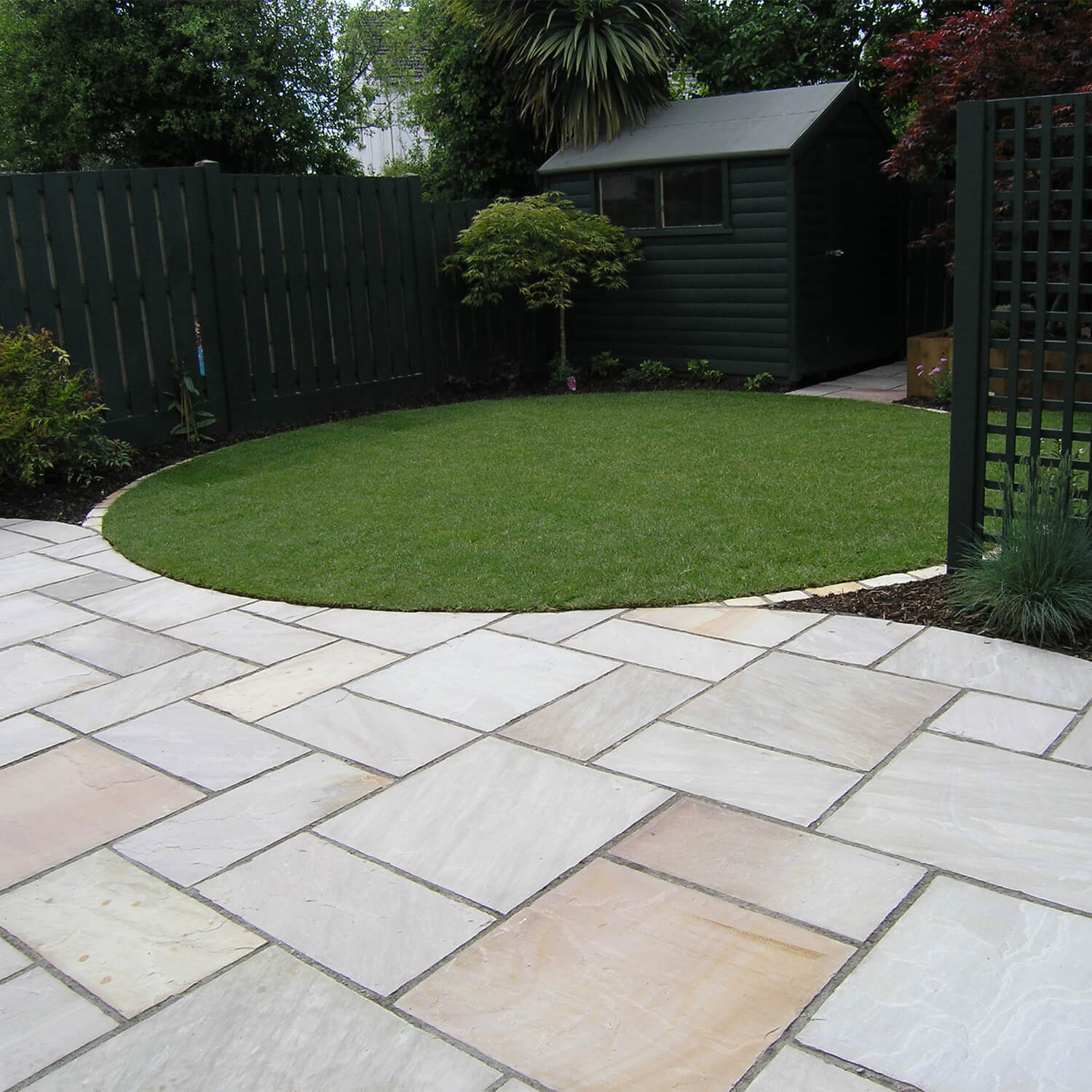Sandstone is one of the most popular choices for paving and it’s easy to see why. This is a material that has been formed over millions of years from sand and deposits in lakes, rivers and on the ocean floor, giving it a combination of beautiful texture and great variation of tone and colour. If you want to get that gorgeous Mediterranean feel in your garden then this is the stone of choice but equally it can be cut to appear sleek and contemporary. It comes in a variety of colours too from greys and browns and greens to warmer hues of orange and red. It is a versatile natural stone that will never go out of style.
Why should I choose sandstone paving?
Unlike limestone, which is flatter and smoother, sandstone is rougher with a more rippled texture that gives any paved area plenty of character. Although you can also opt for a sawn finish if you want a more polished, smooth surface. However, because it is grittier, sandstone is also less slippery when it gets wet (something to seriously consider in the UK’s notoriously inclement weather). Lighter sandstone can be slightly more porous than darker shades and so it may need extra cleaning or require a sealant application but on the whole sandstone is easier to maintain than other natural types of stone, which is why it continues to be a popular choice for paved areas.
Which fades more sandstone or limestone?
Natural stone is more likely to last for an incredibly long time if looked after properly, unlike a cheaper material such as concrete which will fade over time.
The beauty of sandstone is that it can actually look better as it becomes increasingly weathered. This compares favourably to a material like black limestone which is liable to suffer serious fading in the sun and rain.
What can I do to keep my sandstone paving looking at its best?
One way to maintain your paving’s handsome looks is by using a sealant. You can do this before you lay your pavers to prevent them staining while they are being installed, or you can leave them unsealed for a year before you apply the sealant to allow the stone to gain a deeper hued more weathered look.
It is advisable to seal your sandstone regularly and this depends upon how porus it has become. As a rule if your sandstone absorbs water immediately, then you should seal it annually. If it takes five to 10 minutes for water to absorb then this can be done every three to five years.
The verdict:
Sandstone derived from a reliable source will, if taken care of, endure many harsh winters and baking hot summers, it will maintain its unique finish for an incredibly long time making it a fantastic choice for paving.
For more information or advice on natural stone paving, please do not hesitate to contact our team by calling 0800 689 5236 or sending an email to info@premiumpavingco.com








